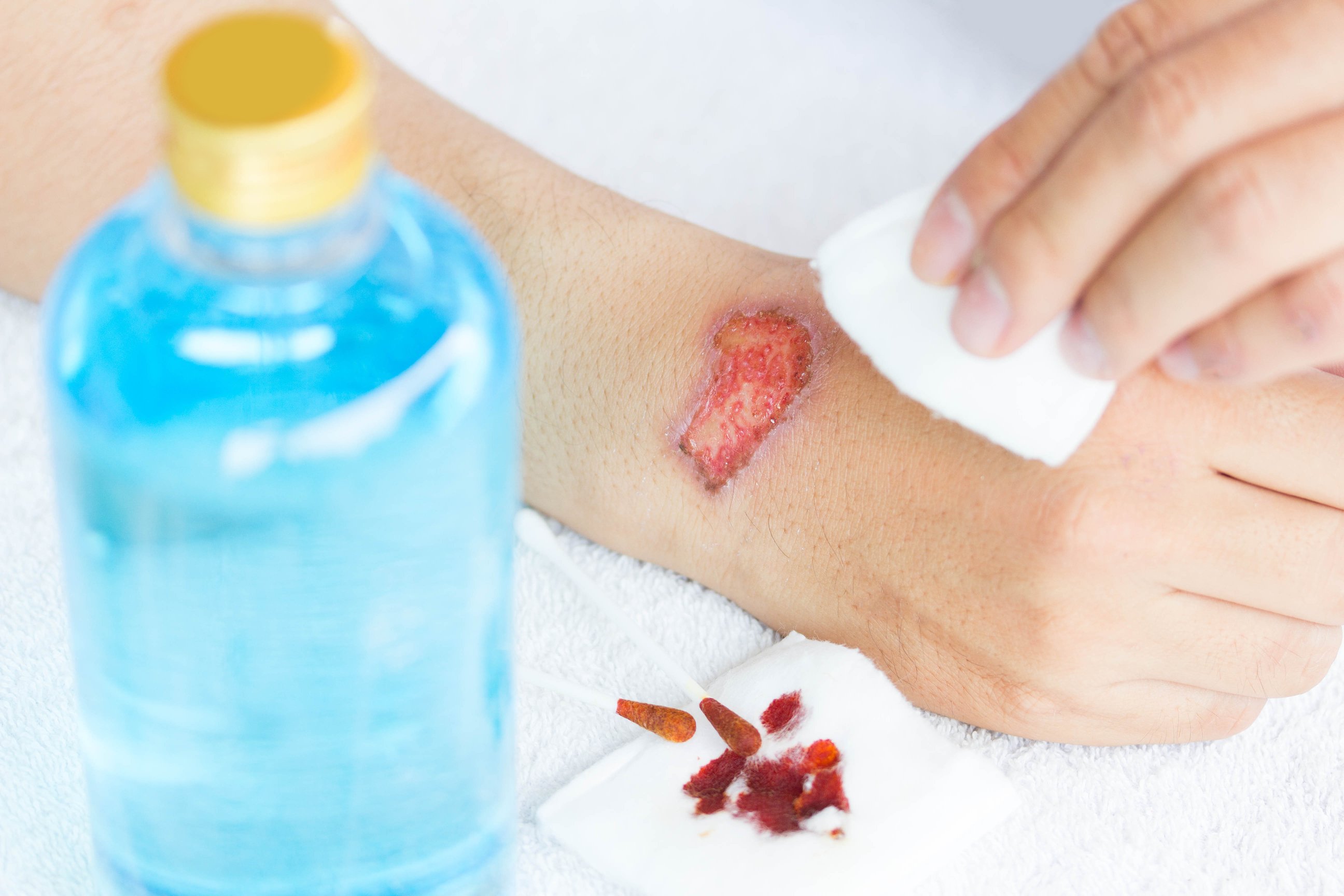Caroline, 89 years old, fell on her left side on the steps to her home while returning from church two weeks ago. The emergency department nurses put Steri-Strips® across it and told her to “keep it clean”. Yesterday she showed me a deep red 4-inch long open area on her left forearm oozing clear fluid, and asked me, “Why isn’t it healing?”
“What have you been using on it?”
“I clean it with peroxide twice a day, and put a bandage over it at night to protect my sheets. Why it isn’t healing? Is it because I’m older, or on a blood thinner?”
“No, not necessarily.”
“But I’m keeping it nice and clean. Isn’t that what hydrogen peroxide is supposed to do?
“Cleaning your skin using hydrogen peroxide works fine unless it’s scraped, cut or skinned off. After that, using hydrogen peroxide to clean your wound creates a problem. Hydrogen peroxide interferes with bacterial growth along with any other new tissue trying to grow. Every time you clean a wound with peroxide you’re poisoning your all new cells trying to heal it. That’s why it’s not healing.”
“Should I use rubbing alcohol, instead?”
“No, because using rubbing alcohol on cuts or open wounds isn’t any better than using hydrogen peroxide. Rubbing alcohol doesn’t clean wounds any better than plain or soapy water, but it sure can cause problems. There are two types of rubbing alcohol you can buy in the store, ethyl alcohol and isopropyl alcohol. Both of them can clean intact skin, but if you use them to clean open cuts or wounds not only do they burn like fire, they actually damage your skin and tissue cells, interfering with and slowing down your healing process.”
Our skin becomes more fragile as we age, with seniors finding that, when they scrape their arm or shin on something, instead of creating an abrasion, the top layer of their skin peels back.
If your cut or scrape is deep or bleeding profusely, you should seek immediate medical attention. Otherwise, you can usually treat a simple skin tear successfully by using pressure to stop the bleeding, cleaning it using plain water, and applying a moist, transparent dressing.
To aid wound healing, a little moisture is a good thing. For skin that rips easily, a thin transparent dressing like Tegaderm® often works amazingly well. Cleaning well at the time of the injury, then using a transparent dressing over the injured area can actually save that “peeled back” layer of skin and speed the healing process.
Tegaderm® and other special dressings are available in most pharmacies and in all medical supply stores.
7 Steps to Speed Up Healing Skin Tears:
- Clean by flushing with plain or soapy water.
Avoid using harsh chemicals like hydrogen peroxide or rubbing alcohol to wounds; they don’t clean or disinfect any better than plain water or soapy water, and can instead damage the exposed tissue.
- Apply direct pressure with gauze or towel to control bleeding.
Apply pressure with gauze or a towel over for least a minute. Resist the temptation to peek because this lets up on the pressure, allowing it to continue to bleed. Direct pressure jumpstarts your clotting factors to stop bleeding more quickly, but applying cold packs and elevating the arm or leg can also help.
- Lay any ripped skin layer back down, matching the edges as best you can. This prevents creating an open wound, which takes 3 to 4 times as long to heal. If the skin flap is still attached, laying the skin back down where it ripped from will often heal beautifully, without scarring.
- Cover with a transparent dressing like Tegaderm®.
This type of dressing keeps the skin flap in place, protects it from dirt and bacteria, and keeps it moist, promoting healing.
- Wear the transparent dressing for at least 2 to 3 days before changing it.
Unless you see lots of blood or fluid pooling underneath, don’t remove the transparent dressing for several days. Slowly peel off the old dressing, pat the area gently with clean gauze or towel if needed to blot away excess fluid or blood.
- Add loosely wrapped gauze if needed to protect from being bumped.
Wrap gauze loosely for padding to provide protection for forearms, elbows or shins that can bump into things.
- If your wound isn’t healing normally, seek medical attention.
If you notice pus or excessive fluid or collecting under the dressing, or it becomes painful, seek medical attention. You may need stitches or an antibiotic.


